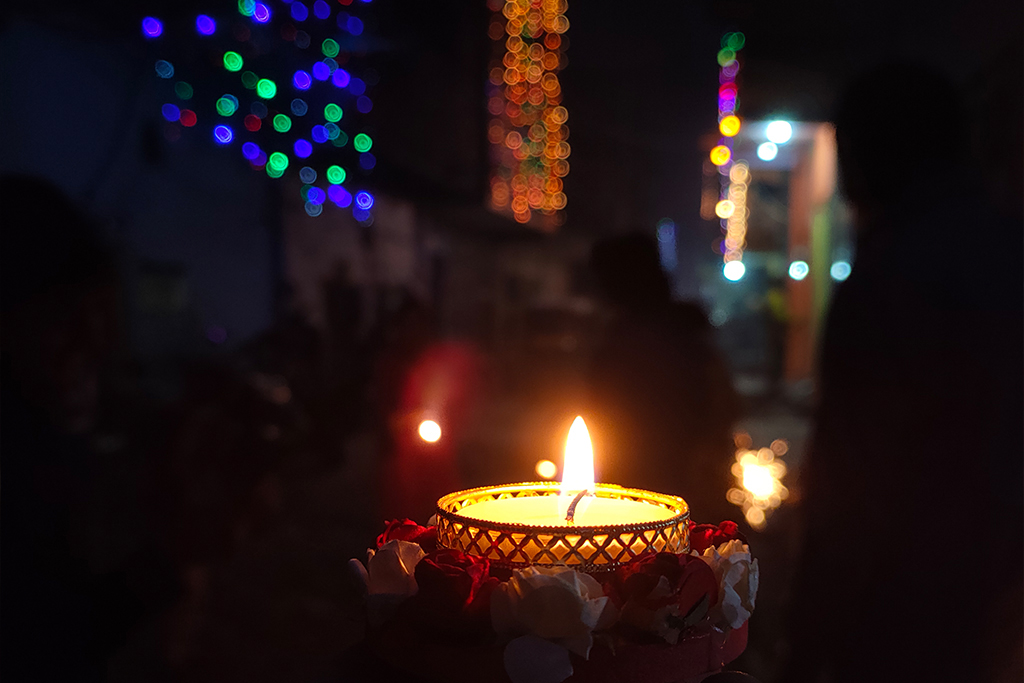Surprising things you didn’t know about Diwali
“So in Uttrakhand what we usually do, especially in Kumaon, as part of Diwali is that the children, after the festivities are done for the day of Mahalakshmi puja, form a group and go about door to door, asking for money, a tradition which is popularly called Bhairlo. They sing songs, they light bonfires using wooden sticks”, Diksha Bisht, a resident of Dehradun, a city in Uttarakhand, tells Media India Group.
With Diwali being round the corner here is a look at some local traditions and customs linked to Diwali celebrations in different states as almost every state in India celebrates Diwali in its unique ways. Southern India celebrates it as the day that Lord Krishna defeated the demon Narakasura. It is also believed that on this day, Vamana Avatara, the fifth incarnation of Lord Vishnu, defeated King Bali and put him in the Patala Loka, the nether world.
In the western states of Gujarat and Maharashtra, the business and trade hubs of India, people are seen hopping to the bustling markets who buy rangoli designs, diyas and lights. Decorating rangolis is an essential element during the Diwali festivities in these states. In Gujarat, the custom of collecting the flame for Kajal (an eyeliner), by women, who put it on their eyes to bring prosperity for the coming year, is very popular.
In Maharashtra, the festival of lights is a four-day extravaganza, where on the first day, cows are worshipped to mark the occasion of Vasubara. On the second day, on the occasion of Dhanteras (a promising day for wealth), people buy brass, silver and gold articles in these states. The Maharashtrian tradition says that on the third day, people ought to take a scented oil bath at the break of dawn and pay their respects at the temple. They are then allowed to feast Faral, a set of special delicacies, such as Karanji, Laddoo, Chakli and Sev. On the fourth day, Laxmi, the goddess of wealth and fortune, is worshipped in Laxmi Puja. Herein, articles of wealth such as money and jewellery are venerated.
Why are Goddess Laxmi and Lord Ganesha Worshiped Together?
Legend has it that Goddess Laxmi had become arrogant because of her immense wealth and power. Her consort, Lord Vishnu, who was baffled by all the self-praise that Laxmi was flaunting, preached to Laxmi, who did not bear any children, that motherhood is the only way to salvation. To pour her heart out, she went to goddess Parvati. Since Parvati had two children, Laxmi asked her to let her adopt one. With a heavy heart, Parvati let her adopt Ganesha as her son. Laxmi, completely elevated by this news, vowed to bestow all her wealth on her son.
Although the Goddess Laxmi is worshipped for wealth and prosperity, wealth should not come without wisdom, Lord Ganesha is worshipped therefore so that he can bestow his knowledge and wisdom to create a fine balance between the two.
What’s with the earthen lamps?
The lighting of diya (earthen lamps) is an important part of the festivities of Diwali, as it signifies purity, goodness, luck and power. Diwali is celebrated on the 15th day of the Kartik calendar, the day of Amavasya or the new moon. In terms of timing, too, the festival marks the point where light (of wisdom, truth and justice) prevails over darkness (of evil spirits and forces). Diyas symbolise light dispelling the influence of evil forces.
Celebrating Diwali in southern India
Diwali in southern states of India is not as extravagant and as popular a festival as it is in the states. Moreover, in the southern states or peninsular India, which is deeply influenced by Dravidian culture, few customs or practices of Vedic culture are followed.
But in many southern states, the festival is celebrated with local flavours and legends. In Kerala, for instance, in a three-day celebration between the months of Kartika ( October and November), Lord Ayyapa or Dharmashastha is worshipped with great fervour. In the neighbouring state of Tamil Nadu, the festivities are saved for the occasion of “Karthika Deepam”, where rows of lamps are decorated and lit in front of every home and, newly married girls are given brass and bronze lamps. People also massage their bodies with oil as a “legend” says that Lord Krishna had killed Naraka, a demon king. Krishna was rewarded with a hot bath and was massaged with oil. Tamils call this early-morning ritual Gangasnanam (or bathing in River Ganga), wherein a feast is also set out on the table with savouries such as Murrukkus, Laddooos and Jangiri.
Why do we burst firecrackers during Diwali?
Over the years, the use of firecrackers has become an integral part of Diwali celebrations. However, there is no record of use of firecrackers having been used by the people of Ayodhya to mark the arrival of Lord Ram. It is also common knowledge that firecrackers were first used by the Chinese around 200 BC. Use of firecrackers also finds no mention in the scriptures, either Ramayana or Mahabharata.
Yet, use of firecrackers has become synonymous with Diwali. However, of late, with rising air pollution in many parts of the country, there has been rising pressure to at least restrict the use of crackers that lead to excessive pollution. In the capital, New Delhi for instance, sale, possession and use of firecrackers has been banned by the government and violation may land you in jail. In other states, environment protection groups and governments have encouraged use of ‘green crackers’ that emit limited amount of noxious gases.










